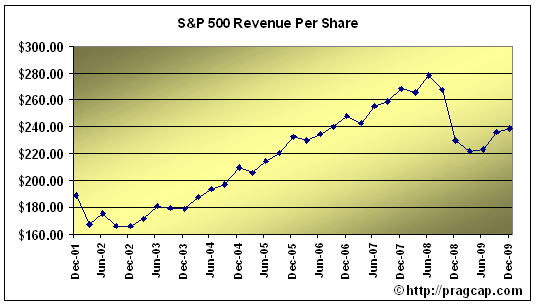The China Market Hurdle: Why BMW, Porsche, And Others Struggle

Table of Contents
Intense Domestic Competition
The Chinese automotive market isn't just big; it's fiercely competitive. The rise of powerful domestic brands like BYD, NIO, and Xpeng is significantly impacting the market share of established international players. These domestic brands possess several key advantages:
- Superior understanding of local consumer preferences: Chinese brands are deeply attuned to the nuances of the local market, offering vehicles tailored to specific needs and desires.
- Aggressive pricing strategies and innovative features: They often undercut international competitors on price while offering cutting-edge technology and features that resonate with Chinese consumers. This competitive pricing is often supported by government initiatives.
- Government support and subsidies: The Chinese government actively promotes domestic automakers through subsidies, tax breaks, and favorable regulations, creating an uneven playing field for foreign entrants.
- Rapid technological advancements and electric vehicle adoption: Chinese brands are at the forefront of electric vehicle (EV) innovation, capitalizing on the growing demand for sustainable transportation in China. This rapid pace of technological advancement outpaces many established international competitors.
This potent combination of factors puts immense pressure on established international brands, forcing them to adapt rapidly or risk losing significant market share in this high-stakes game. The China market hurdle is heightened by the sheer strength and agility of domestic competition.
Navigating the Regulatory and Legal Landscape
The regulatory environment in China presents a complex and often challenging landscape for foreign automakers. Navigating the intricacies of import regulations, licensing, and bureaucratic processes requires significant resources and expertise. Key obstacles include:
- Stringent emission standards and safety regulations: Meeting China's increasingly stringent environmental and safety regulations demands substantial investment in research and development, adding to the overall cost of doing business.
- Challenges in obtaining necessary approvals and certifications: The process of securing the necessary approvals and certifications can be lengthy and cumbersome, delaying the time-to-market for new models.
- Intellectual property protection concerns: Protecting intellectual property rights in China remains a significant concern for many foreign companies, adding another layer of complexity to operations.
- Import tariffs and taxes: High import tariffs and taxes significantly increase the cost of importing vehicles into China, reducing profitability margins.
These regulatory hurdles increase operational costs, extend time-to-market, and generally make it more difficult and expensive for foreign automakers to compete effectively. Understanding and effectively managing these regulatory complexities is crucial to overcoming the China market hurdle.
Understanding Unique Consumer Preferences
Chinese car buyers have unique preferences and cultural nuances that foreign automakers must understand to succeed. These preferences are constantly evolving, demanding continuous market research and adaptation.
- Emphasis on technological features and connectivity: Chinese consumers are early adopters of technology and place a high value on advanced features, connectivity, and digital integration in their vehicles.
- Preference for specific body styles and engine types: Market trends in China may favor specific body styles (SUVs are particularly popular) and engine types that differ from those favored in other markets.
- Growing demand for electric and hybrid vehicles: The shift towards electric and hybrid vehicles is accelerating in China, presenting both opportunities and challenges for foreign automakers.
- Importance of brand image and social status: Brand image and social status play a significant role in purchase decisions, requiring careful brand building and marketing strategies.
Misinterpretations of these preferences can lead to marketing failures and lost sales. Understanding these subtleties is a crucial element in navigating the China market hurdle.
Supply Chain and Infrastructure Challenges
Establishing and maintaining a robust supply chain in China presents its own set of challenges. Foreign automakers must contend with:
- Logistics and transportation hurdles: China's vast geographical size and complex logistics networks can create delays and inefficiencies in the supply chain.
- Finding reliable local suppliers: Sourcing high-quality components from reliable local suppliers requires extensive research and relationship building.
- Managing production and distribution networks: Effectively managing production and distribution networks across a large and geographically diverse market requires significant organizational capabilities.
- Potential disruptions due to geopolitical factors: Geopolitical factors and potential trade disputes can disrupt supply chains, creating further uncertainty.
These logistical issues can significantly impact production efficiency, increase costs, and ultimately affect overall profitability. Mitigating these supply chain risks is critical for overcoming the China market hurdle.
Conclusion
Successfully navigating the China Market Hurdle requires a deep understanding of the unique competitive landscape, regulatory environment, consumer preferences, and supply chain dynamics. The intense domestic competition, complex regulations, evolving consumer tastes, and logistical challenges all contribute to the difficulty of succeeding in this vast market. These key takeaways emphasize the importance of thorough market research and strategic planning before entering or expanding operations in China. Successfully navigating the China market hurdle requires thorough due diligence. Learn more about the intricacies of this crucial market by exploring [link to relevant resource].

Featured Posts
-
 La Roue De La Fortune M6 Eric Antoine A T Il Conquis Son Public Apres 3 Mois
May 11, 2025
La Roue De La Fortune M6 Eric Antoine A T Il Conquis Son Public Apres 3 Mois
May 11, 2025 -
 100 Mtv Unplugged Episodes Now Streaming The Complete List
May 11, 2025
100 Mtv Unplugged Episodes Now Streaming The Complete List
May 11, 2025 -
 De Zaak Andrew Geheime Ontmoetingen En De Link Met China
May 11, 2025
De Zaak Andrew Geheime Ontmoetingen En De Link Met China
May 11, 2025 -
 Decreasing Earthquake Frequency On Santorini A Scientific Assessment Of Current Trends
May 11, 2025
Decreasing Earthquake Frequency On Santorini A Scientific Assessment Of Current Trends
May 11, 2025 -
 Shifting Greenlands Command Assessing The Pentagons Plan And Potential Geopolitical Implications
May 11, 2025
Shifting Greenlands Command Assessing The Pentagons Plan And Potential Geopolitical Implications
May 11, 2025
